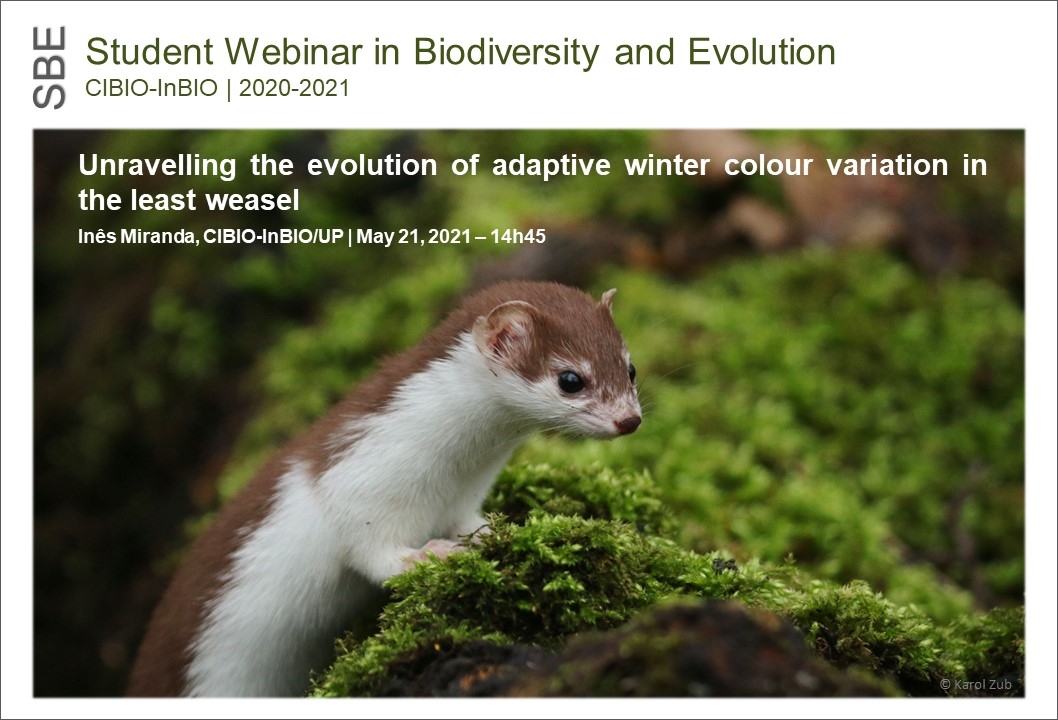Unravelling the evolution of adaptive winter colour variation in the least weasel
21 May 2021 - Inês Miranda, CIBIO-InBIO/UP | 14h45

STUDENT WEBINAR IN BIODIVERSITY AND EVOLUTION
Seasonal coat colour change, i.e. the ability to alternate between summer-brown and winter-white coats, is a remarkable phenological adaptation of several mammal and bird species. This adaptive trait allows the maintenance of camouflage year-round in habitats with snow cover seasonality. Polymorphism in the trait is maintained in many of these species, with populations preserving a brown coat year-round in environments with less winter snow. Snow cover decreases associated with climate change endanger the survival of winter-white populations, due to camouflage disruption in snowless backgrounds. Winter-brown populations may thus provide the necessary genetic variation to allow rapid adaptation to the changing climate. However, the study of the mechanisms underlying the evolution of seasonal coat colour change and winter colour polymorphism is still limited to a few species. During my PhD, I will study the evolution and adaptive potential of winter colour polymorphism, using the least weasel (Mustela nivalis) as model species. In this seminar, I will present the first results of my project, which focused on unravelling the genetic basis of the winter colour polymorphism in the species. Using whole-genome sequencing of museum-collected specimens representative of two transition zones between winter morphs, I first characterise genome-wide patterns of genetic variation and their correlation with the geographic distribution of alternate morphs. I then combine population genome scans of differentiation and natural selection with genotyping assays to pinpoint the genomic region associated with the polymorphism. I will also briefly discuss my ongoing work, which has been focused on generating new data for follow-up questions of my PhD, using next-generation target enrichment approaches.
Inês Miranda holds an MSc degree in Biodiversity, Genetics and Evolution from the University of Porto. She is currently a 2nd-year PhD student of the BIODIV doctoral program, working under the supervision of Dr. José Melo-Ferreira (CIBIO-InBIO), Prof. Love Dalén (Swedish Museum of Natural History), and Prof. L. Scott Mills (University of Montana). Her main research interests focus on understanding the mechanisms underlying the evolution of key adaptive traits in natural populations, and their interplay with population history, genetics, and ecology. Her PhD work combines museum sampling with genomic approaches and ecological modelling to understand the evolution and adaptive potential of seasonal coat colour variation, using mustelids (Mustela spp.) as model species.
[Host: José Melo-Ferreira, Genomics of Evolutionary Change - EVOCHANGE]